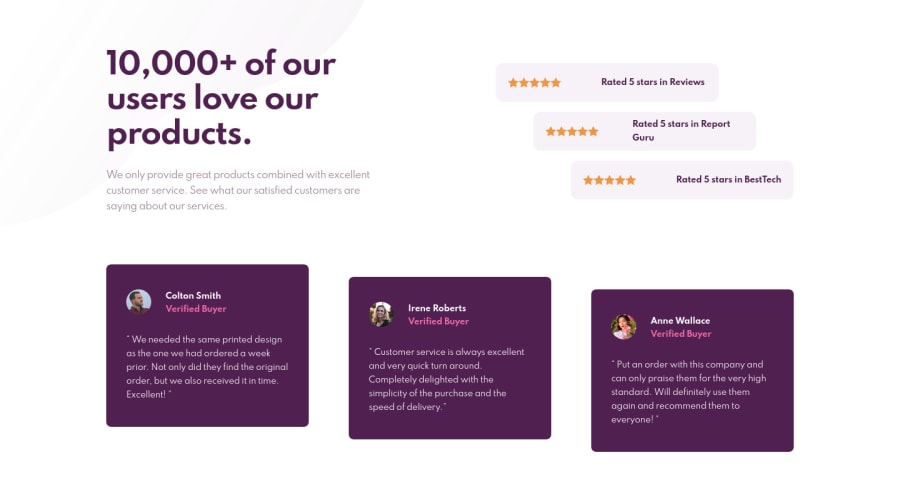
Submitted over 3 years ago
Social proof section (HTML and CSS)
@Rezzak48
Design comparison
SolutionDesign
Solution retrospective
Any Feedback? t
Community feedback
Please log in to post a comment
Log in with GitHubJoin our Discord community
Join thousands of Frontend Mentor community members taking the challenges, sharing resources, helping each other, and chatting about all things front-end!
Join our Discord
